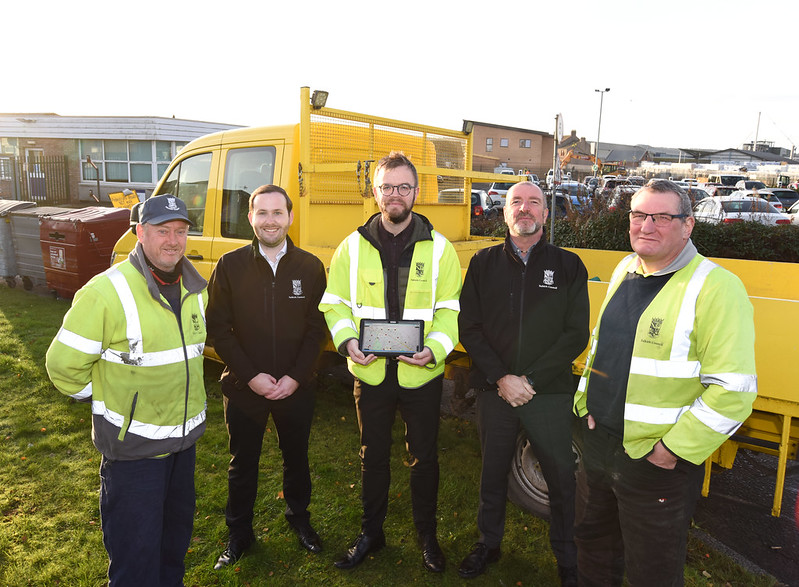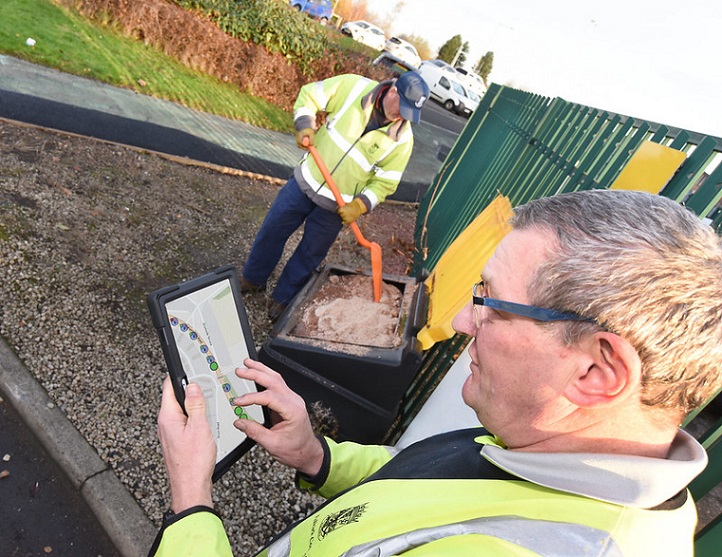
Pictured: Members of the Roads Asset Management Team and frontline workers who worked closely together to help develop new software.
Armed with tablets and in-cab technology, frontline teams in Roads & Grounds are now using specialist software to prioritise their workload, while routing software is making street cleaning more efficient.
By embracing new technology, the service has also taken a wide range of paper-based processes online, so everything from repair instructions to writing off jobs once repairs are complete is now done online and onsite.
Real-time updates also mean new priority jobs can be dealt with there and then rather than teams having to return to the depot to pick up instructions.
All of this work has helped the service become more efficient and effective at managing it's time and resources. In a nutshell, it has helped it do more with the resources it has at a time when budgets are likely to becoming even tighter.
Gary Neill, Area Roads Engineer, said: "This work is a fundamental part of the Council of the Future Transformation of Roads & Grounds project, which aims to make our service more responsive, innovative, trusted and ambitious. Rather than settle for an off-the-shelf product that didn't meet all our needs, we worked closely with an external provider to create a suite of software that gives us exactly what we need, which is quite a unique approach to take in the public sector."
He added: "Several Council services were forced to go digital because of the pandemic. This work, however, is not the result of COVID; it is the result of a lot of hard work undertaken by our Roads Asset Management Team over several years. They have worked closely with teams delivering services on the ground, using their feedback and suggestions to refine our system. That collaborative approach has got us to where we are now."
Harnessing data

Pictured:Frontline teams using map-based software to fill grit bins.
Since making it quicker and easier to report and repair potholes by automating the customer journey in early 2021, Roads & Grounds has introduced new technology and software to help with:
- Grit bin refilling
- Street sweeping
- Litter bin emptying
- Road safety surveys
- Street lighting reporting and repairs, and, most recently,
- Gully cleaning
The service is now looking to digitally map open spaces. This will allow Grounds Maintenance to quickly see the areas it is responsible for as well as help with shrub management and more efficient targeting of resources. Mapping is expected to be complete by April.
With the trend for drier summers and more intense rain and wetter winters set to continue, the chances of more flash floods occurring increases.
But thanks to new ways of working, the service is upping its game with new software helping it identify potential defects and gullies that need frequent attention before issues arise.
Gary, who is also the Project Manager for the Transformation of Roads & Grounds, said: “Because Inspectors and teams on the ground have tablets, they can write off a job there and then and time stamp it. By recording this data, it helps us build up a picture of the gullies we are visiting most often. This helps us predict where issues may arise in the future so we can clear the gullies in advance of intense rainfall and minimise potential flooding.
“Having the new software and the tablets allows us to collect similar data for other areas of our work – something that was labour and time intensive in the past. We can then input the information into Power BI, one of the Microsoft 365 tools available to us, and start to predict trends. The more data we bank, the more efficient and effective we will become at addressing potential problems before they arise.”
Related content: